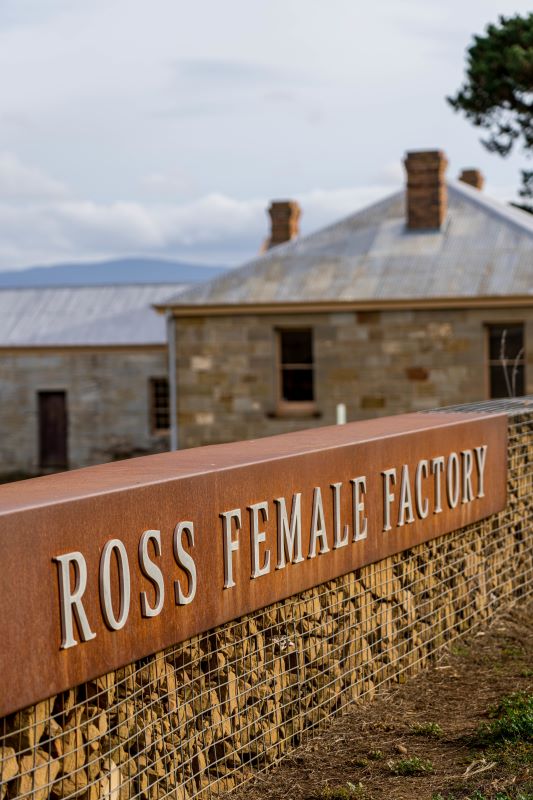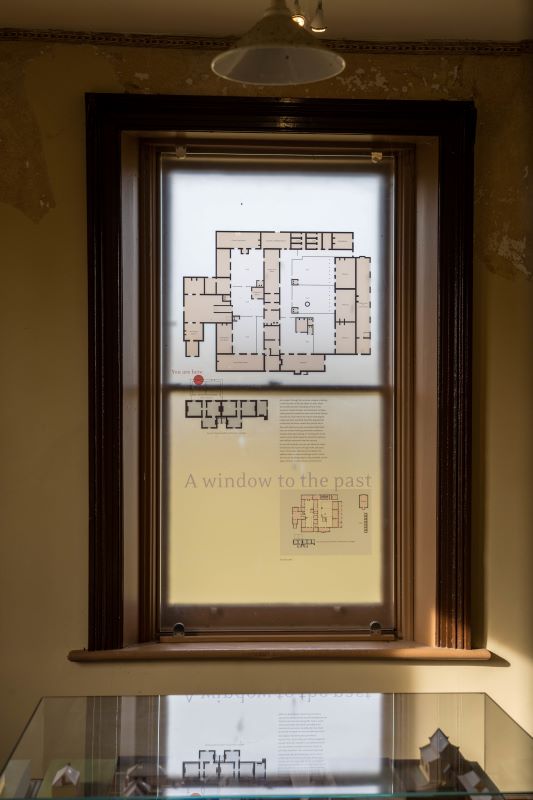After the establishment of Van Diemen’s Land in 1803, Britain began transporting convicts to this island colony. Over 12,000 women came to Tasmania over the 50 year Convict Era. Women were typically sentenced for periods of 7 or 14 years, usually for petty theft from their employers in England. In the penal colony, women were either assigned as domestic servants to free settlers or were incarcerated within the Female Factories. This name was abbreviated from the British institutional title “Manufactory” and referred to the prisons’ role as a Work House. On arrival, female convicts were divided into three classes: The Punishment Class: sentenced to periods of “separate confinement” in the Solitary Cells. The Crime Class: incarcerated within the prison. The Hiring Class: given privileged positions within the Factory until they were assigned as domestic servants to local properties. The Ross Female Factory also housed the babies of convict women in a Nursery Ward. An enforced early weaning age and unhygienic conditions resulted in very high infant mortality rates within the factories.
Built in the early 1840s, the Ross Female Factory incarcerated female convicts from 1847 to 1854, when the Transportation System ceased operation. This incarceration station was one of four networked women’s prisons that operated during Tasmania’s convict era. Since 1995 Eleanor Casella (Department of Anthropology, UC Berkeley) has directed excavations of this mid-nineteenth century female convict site. Results of the archaeological excavations provided some new images of daily life experiences for female convicts. Summer field seasons in 1995 and 1997 opened 105 square meters, excavating three areas within the Ross Female Factory: the Crime Class, the demoted Solitary Cells, and the promoted Hiring Class. These three areas represented the three stages of reform that female convicts passed through during their incarceration. A small portion of the Assistant Superintendent’s Quarters was also excavated. Artifacts and architectural remains discovered through the archaeological excavation are being used to compare daily life within different parts of this prison. A number of these artifacts, including glass vessel and pottery fragments, bone fragments and a key are on display in the Wool Centre Museum.
The Tasmanian Wool Centre has managed the Ross Female Factory site on behalf of the Parks & Wildlife Service since 1990. A chronological history of the site offers an overview of its life through the ages:
| 1812 | Garrison established at the ford in the Macquarie River |
| 1821 | Town of Ross proclaimed |
| 1831 | Brick and thatch huts built on the site for male convict chain gang |
| 1832 | Sale of land at Ross for settlers |
| 1833-35 | Permanent stone buildings constructed for chain gangs employed on the Ross Bridge |
| 1841 | Site used as a male probation station |
| 1847 | Expansion of buildings for female convicts |
| 1848 | Women mover into the Factory |
| 1853 | Transportation of convicts to Van Diemen’s land stops> |
| 1854 | The Ross Female Factory closes |
| 1855 | Factory handed over to Police Department, vacant except for caretaker |
| 1894 | Factory site reserved for Municipality of Ross |
| 1895 | Cottage converted for use by Superintendent of Police |
| 1897 | Remaining Factory buildings demolished |
| 1907 | Police resident at cottage |
| 1938 | Mr Leslie Knowles uses the cottage as his home until 1974 |
| 1980 | Historic site transferred to National Parks and Wildlife service |
| 1990 | Tasmanian Wool Centre (TWC) begins managing the site on behalf of PWS |
| 2004 | TWC procures grant funding to begin work on external interpretation panels |
| 2009 | Further grant approved for displays, lighting and building restoration |
| Present | TWC continues to manage the site, alongside generous local volunteers |
The Ross Female Factory is now a must see destination for visitors interested in the stories of Tasmania’s early European history. Together with Port Arthur and the Cascades Female Factory, this site represents an important part of our Island’s convict story. For a full report on the Fieldwork undertaken during this excavation, click here.
The Ross Female Factory is open 10am to 4pm daily.

Female Factory Cottage by Alastair Bett.

Inside Female Factory Cottage

Facing South - Ross Factory Archaeology Project 1995 - E. Casella

Convict women display

Site model

Interpretation panel

